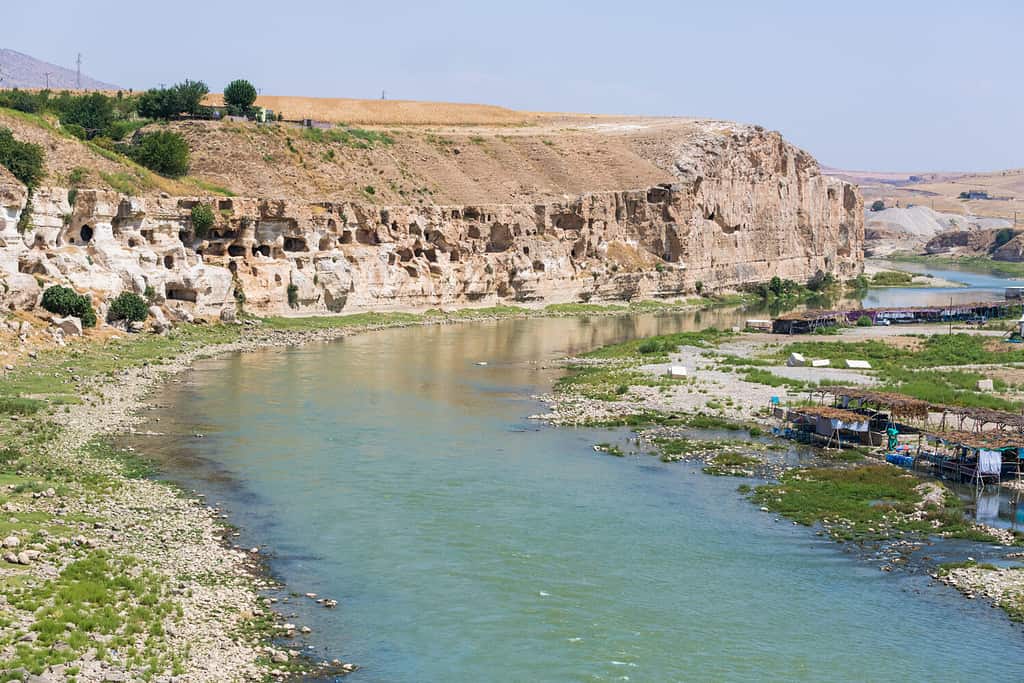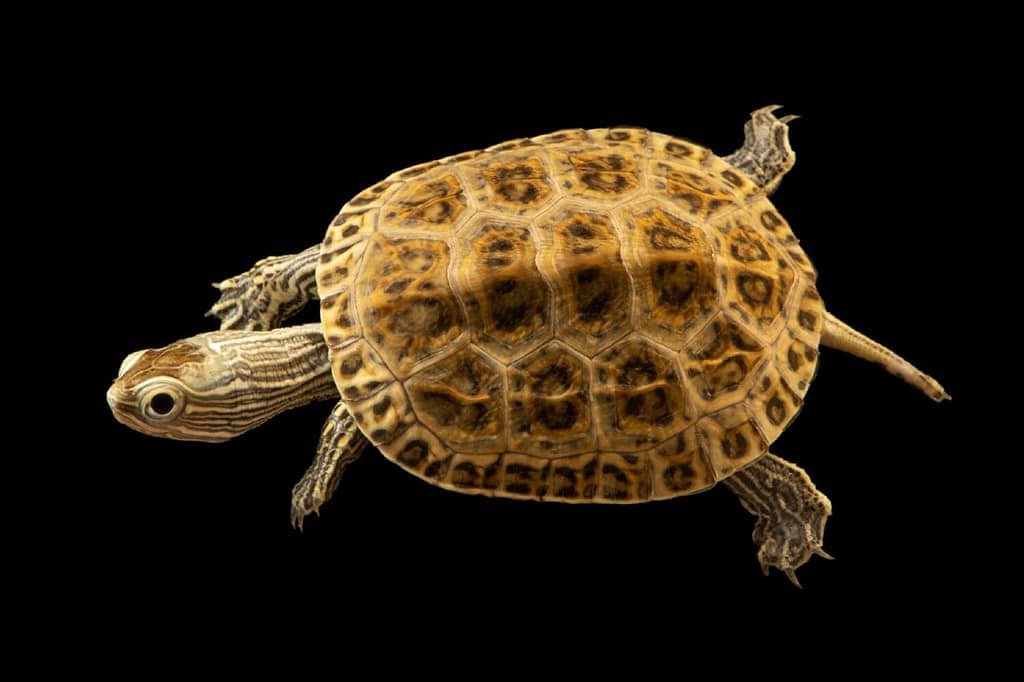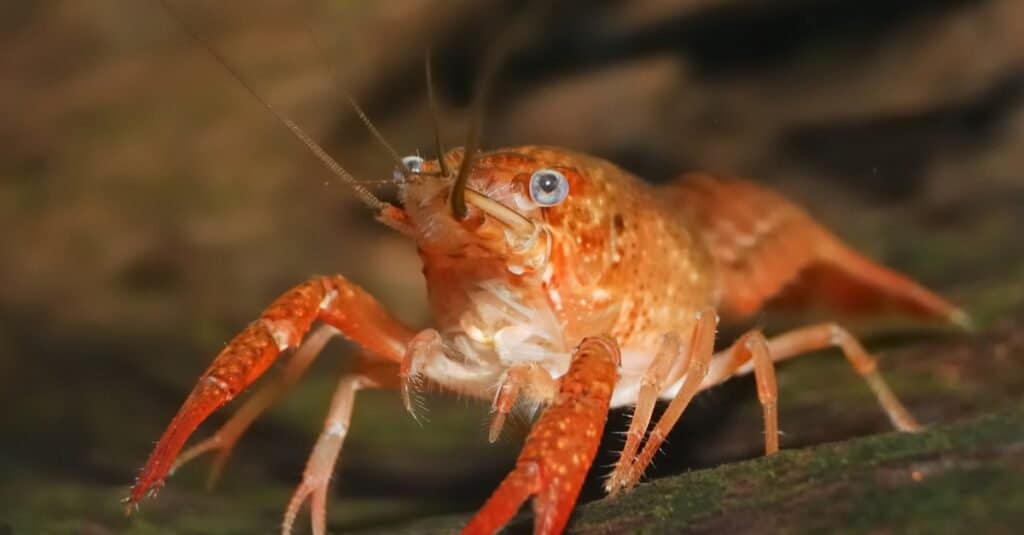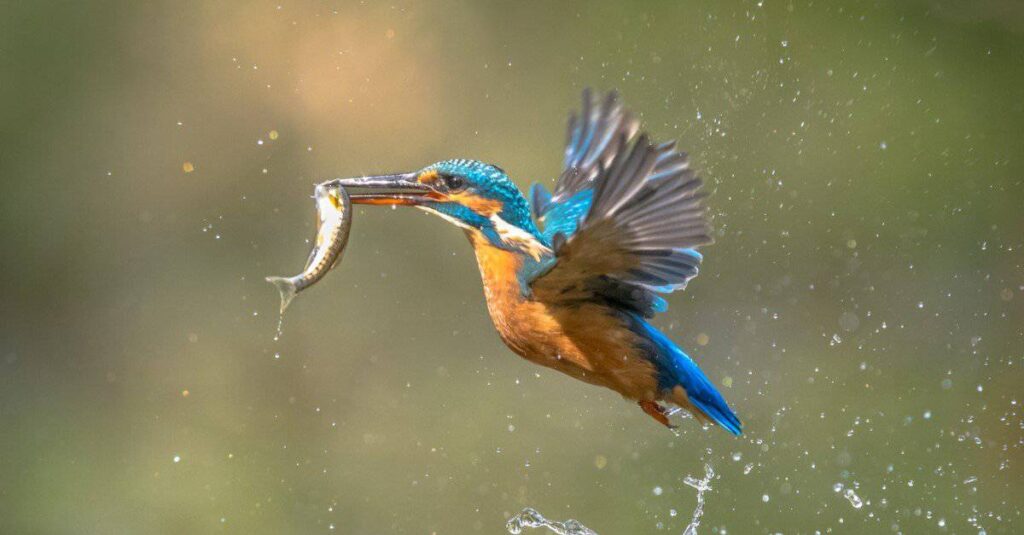The Tigris River is both historically and ecologically significant. This majestic feat of nature has played a critical role in the formation and longevity of some of the most powerful civilizations of ancient times. It is also one of the most influential ecological factors in a vast area. While this article does not discuss every animal species that lives in the Tigris River, it does review many very important ones. So, what lives at the bottom of the Tigris River? Let’s find out.
Background
Geography

The Tigris River is a powerful force of nature stretching 1,181 miles long.
©Inna Giliarova/Shutterstock.com
The Tigris River is a significant waterway in the Middle East, known for its historical and geographical significance. It flows through several countries in the region and is a vital part of the larger Tigris-Euphrates river system. The river originates in eastern Turkey, where it is fed by various tributaries originating from the eastern Anatolian mountains. It then flows southeastward, passing through the rugged terrain of eastern Turkey including high plateaus, deep valleys, and mountainous regions. This mountainous terrain provides the river with a rapid descent in its early stages, leading to fast-flowing waters.
As the Tigris continues its course, it enters Iraq, where it flows through the heart of the country, ultimately converging with the Euphrates River to form the Shatt al-Arab waterway near the southern city of Basra. This confluence is a defining feature of the Tigris-Euphrates river system, which is often referred to as the “Fertile Crescent” due to its historical significance as one of the cradles of human civilization.
The Tigris River plays a pivotal role in the geography and hydrology of the region. It irrigates fertile plains along its banks, supporting agriculture and providing water for local communities. However, the terrain surrounding the Tigris varies from fertile alluvial plains to arid desert landscapes, depending on its location within Iraq. The river’s waters have been harnessed for millennia to support agriculture and provide drinking water, making it a vital resource for the people of the region.
History
The Tigris River has played a pivotal role throughout history as one of the principal waterways in the ancient region known as Mesopotamia, often regarded as the cradle of civilization. Its waters have nourished the fertile plains along its banks and provided sustenance for various major civilizations that depended on it for their prosperity.

This Mesopotamian rock art is an Assyrian artifact.
©Viacheslav Lopatin/Shutterstock.com
Among the most prominent civilizations that flourished along the Tigris River were the Sumerians, Akkadians, Assyrians, and Babylonians. These societies developed sophisticated irrigation systems to harness the river’s waters, transforming arid lands into fertile fields for agriculture. The Tigris and the neighboring Euphrates River formed the basis of Mesopotamian life, facilitating crop cultivation, transportation, and trade.
In addition to agriculture, the Tigris River served as a crucial route for commerce and communication. Ancient cities, such as Ur and Nineveh, thrived along its banks, becoming hubs of trade and cultural exchange. Furthermore, the Tigris played a role in the defense of these civilizations, serving as natural barriers against invaders and, at times, as a source of conflict between rival empires.
What Lives at the Bottom of the Tigris River?
Fish
The Tigris River is a haven for a diverse range of fish species. These aquatic inhabitants are crucial components of the river’s ecosystem, serving both ecological and economic roles. While the specific fish species may vary along different stretches of the river, several notable ones are common in its waters.

The common carp is one of the most populous fish species in the Tigris River.
©Milan Rybar/Shutterstock.com
One of the most widespread and abundant fish species in the Tigris is the common carp (Cyprinus carpio). Carp are incredibly adaptable and resilient, making them well-suited to the dynamic water conditions of the river. They contribute significantly to the river’s fish population and are frequent targets of local fishermen.
The Euphrates catfish (Silurus triostegus) is another prominent fish species native to the Tigris-Euphrates river system. These large catfish can grow to substantial sizes and are highly prized for both sport and commercial fishing, contributing to the region’s fisheries.
There are many other common species, as well. The Common barbel (Barbus barbus) is recognizable by the prominent barbels around its mouth. These fish are essential components of the Tigris’ aquatic food web and are popular targets for anglers due to their size and fighting spirit. Gibel carp (Carassius gibelio), also known as Prussian carp, are commonly found in the Tigris River. They are known for their adaptability to various water conditions, contributing to the river’s fish diversity. Additionally, the Turkish tooth carp (Aphanius anatoliae) is a small, native fish species inhabiting the upper reaches of the Tigris River in Turkey. It has become a species of conservation concern due to habitat degradation and overfishing. Rudd (Scardinius erythrophthalmus) are known for their distinct reddish fins and are often found in slower-moving sections of the river.
Reptiles
The Tigris River is not only a vital waterway for fish but also a habitat for various reptile species. These reptiles contribute to the river’s ecological diversity and are an integral part of the local ecosystem. One of the reptile species commonly found along the Tigris River is the Nile softshell turtle (Trionyx triunguis). Recognized by its unique soft, leathery shell, this aquatic turtle is adapted to life in freshwater environments. It’s often seen basking on the riverbanks or floating on the water’s surface, where it can easily access both land and water.

Caspian turtles are one of the reptile residents of the Tigris River.
©Usha Roy/Shutterstock.com
Another notable reptile resident is the Caspian turtle (Mauremys caspica). These turtles are semi-aquatic and are often found in the wetlands and slow-moving sections of the river. They are known for their distinctive appearance, with dark shells and bright yellow stripes on their necks and limbs.
Various snake species also inhabit the Tigris River’s vicinity, although they are more commonly found in the surrounding wetlands and marshy areas. The eastern water snake (Nerodia sipedon) is one such species. While non-venomous, these snakes are excellent swimmers and are adapted to the river’s riparian habitats. They play an important role in controlling aquatic populations of amphibians and small fish.
Amphibians

The common toad is one of many amphibian species that inhabits the Tigris River.
©Bernie, CC BY-SA 3.0, via Wikimedia Commons – License
Amphibian species are a fascinating component of the ecosystem surrounding the Tigris River, contributing to the region’s biodiversity and ecological balance. While not as diverse as fish or reptiles in this habitat, several amphibian species call the Tigris River and its adjacent wetlands home.
One of the amphibian species commonly found in the Tigris River’s vicinity is the marsh frog (Pelophylax ridibundus). These large, green frogs thrive in the wetlands and slow-moving sections of the river. Their distinctive croaking calls are a characteristic sound of these aquatic habitats, particularly during the breeding season. Marsh frogs play a crucial role in local food webs, serving as both predators and prey.
Another amphibian species in the Tigris River region is the common toad (Bufo bufo). These adaptable amphibians are often seen in the riparian areas surrounding the river. Their warty skin and distinctive hopping movement make them easily recognizable. They are nocturnal creatures and forage for insects and other small invertebrates during the evening hours.
The Tigris River and its wetlands also provide habitat for various newt species, including the Mesopotamian newt (Neurergus crocatus). These colorful, semi-aquatic salamanders are typically found in slow-moving waters, where they breed and lay their eggs. The Mesopotamian newt, in particular, is native to this region and plays a vital role in maintaining the ecological balance of the riverine ecosystem.
Invertebrates
Many invertebrate species contribute to the Tigris River’s complex ecosystem. These often-overlooked organisms play crucial roles in nutrient cycling, food chains, and overall ecosystem health. One of the most noticeable invertebrates in the Tigris River is the freshwater mussel. These bivalve mollusks are filter feeders, which means they help maintain water quality by removing particles and algae from the water column. Freshwater mussels are crucial for maintaining the river’s ecological balance. They serve as a food source for various aquatic organisms and play a role in nutrient cycling.
Insect species are abundant in and around the Tigris River. Aquatic insects, such as mayflies, caddisflies, and stoneflies, inhabit the river’s waters during their larval stages. These insects serve as essential food sources for fish and other aquatic animals. Additionally, adult insects that emerge from the river provide sustenance for terrestrial organisms, contributing to a complex food web.

Crayfish have a global distribution, except for India and Antarctica.
©Alex Stemmers/Shutterstock.com
Crustaceans like crayfish and freshwater crabs also live in the Tigris River. These invertebrates are omnivorous and play roles both as scavengers and as predators, helping to maintain the health of the river’s ecosystem by consuming decaying organic matter and smaller aquatic organisms.
Various mollusks, including snails, are present in the Tigris River. These gastropods are integral to the river’s nutrient cycling processes. Additionally, they serve as a food source for certain fish species and contribute to the overall biodiversity of the aquatic environment.
What is at the Top of the Food Chain?
The food chain in the Tigris River is a complex web of interactions that sustains the aquatic ecosystem. At the base of this food chain are primary producers, such as algae and aquatic plants, which utilize sunlight and nutrients to produce organic matter through photosynthesis. These primary producers form the foundation of the aquatic food web, providing sustenance for a variety of herbivorous organisms.
Moving up the trophic levels, herbivorous fish and invertebrates, like snails and some crustaceans, consume the primary producers. These herbivores serve as prey for a range of secondary consumers, including predatory fish like pike, carp, and catfish. These secondary consumers are critical components of the Tigris River’s food chain, as they help regulate herbivore populations and maintain ecosystem balance.

Although they don’t live
inthe river, kingfishers are important members of the Tigris River ecosystem.
©Rudmer Zwerver/Shutterstock.com
At the top of the food chain in the Tigris River, the apex predator position is often occupied by large fish species like the Euphrates catfish or predatory birds such as herons and kingfishers. These apex predators feed on a variety of prey species, including other fish, amphibians, and invertebrates, exerting top-down control on the ecosystem by influencing the abundance and distribution of their prey.
The photo featured at the top of this post is © Jane Rix/Shutterstock.com
Thank you for reading! Have some feedback for us? Contact the AZ Animals editorial team.






